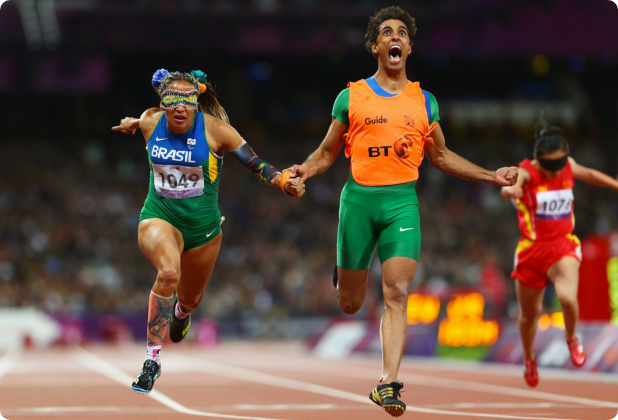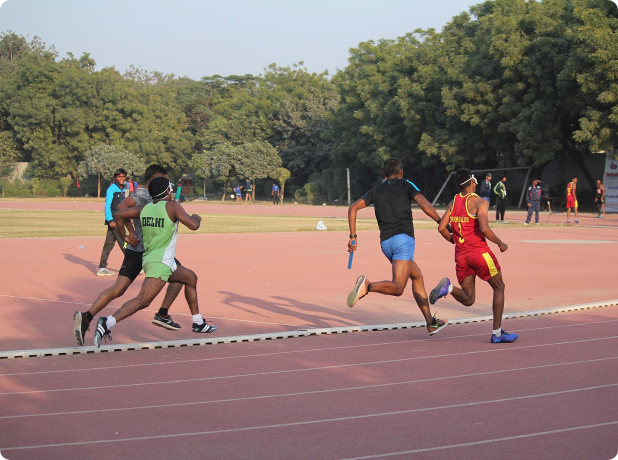Athletics
Athletics
Athletics is one of the most popular and accessible sports for athletes with visual impairments. There are events on the track and field that feature at the Paralympic Games. The sport is governed by World Para Athletics and are generally held under the rules of World Athletics.
There are three classifications for athletes. B1 and B2 competitors have the most severe visual impairments whilst B3 athletes have the least.
Where adaptations to the rules of sighted athletics are made, these generally involve athletes running with a guide or following a person’s voice. For example a long jumper may use a person to shout or clap when they need to jump.
As well as the Paralympic Games and competitions organised by World Para Athletics, athletics features at the IBSA World Games.
The World Games are the world’s biggest high performance sports event
for athletes with visual impairments. As such, there are more events on the programme than you would find at the Paralympics. The World Games are a good opportunity for testing new events before they are put forward for the Paralympic Games.

History
Athletics for blind and visually impaired athletes have a long history. Since the formation of IBSA in 1981 there has been a regular programme of international competition at a continental and world level.
Athletes with visual impairments first competed in athletics at the Paralympic Games at New York 1984.
IBSA has also hosted dedicated competitions for athletics, contributing towards the advancement of the sport.

Historic results and records
IBSA Athletics Committee
IBSA helps to inform research into classification and to train classifiers for athletics. In addition the IBSA Athletics Committee helps to organise competitions and ensure that athletes with visual impairments are fairly represented at competitions around the world.
Dr. Mostafa Bahrami
Chair Sports committee